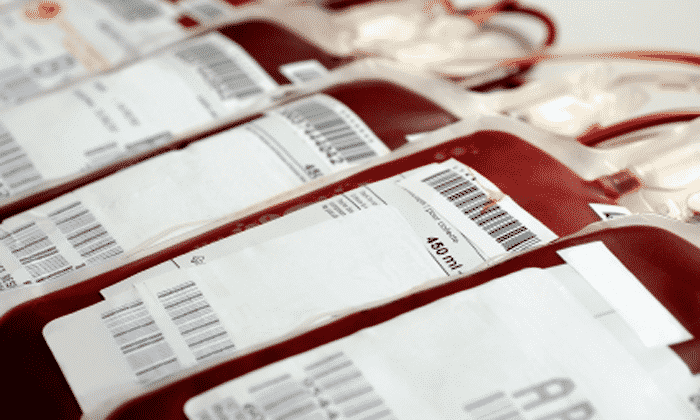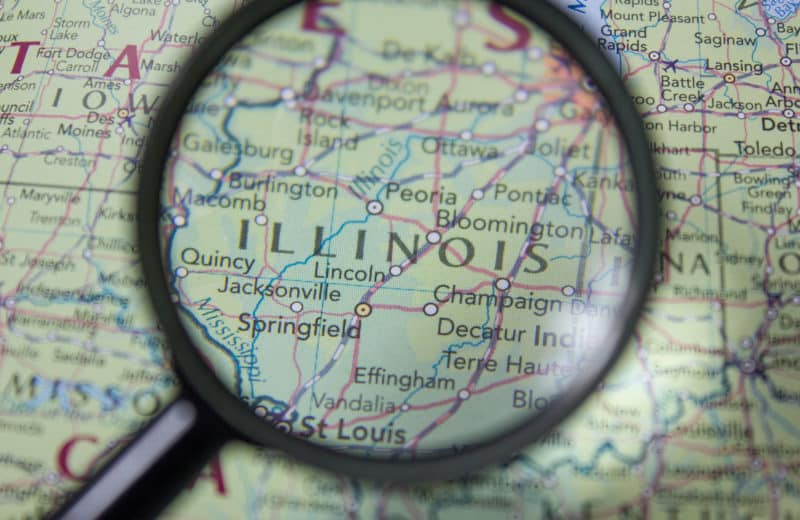Despite evidence contrary to its reasons, the FDA still discriminates against gay blood
By Alex Lubischer
I was 17 the first time I donated blood. I did well. The nurse said I had good veins and I think I puffed out my chest just little. She pressed a cotton ball onto my antecubital, secured a band over it and led me to the recuperation area. I sat at a card table with fellow donors: adults from the community and upper-classmen from my high school. We ate Frito-Lays and drank Tang from Dixie cups.
I felt like I had done a very good deed. [spacer style=”2″]
– Excerpt from New York Times article “ New Homosexual Disorder Worries Health Officials” (May 11, 1982)
Now that I can’t donate blood I feel bad about not donating more when I could. While I made out like an all-star the first time, the second time didn’t go so well. I nearly passed out and that turned me off to the whole thing. So, I didn’t donate all throughout college even though, at the time, I still could have.
Now I can’t. I do not have HIV, but I am in a monogamous relationship with a same-sex partner who is also HIV-negative. According to a longstanding Food and Drug Administration (FDA) policy, this puts me “at risk for becoming infected with HIV” and I am not allowed to donate blood. The lifelong ban extends to any man who has had sex with another man, even once, since 1977.
The FDA enacted this policy a quarter century ago in 1985, the same year HIV was identified as the virus that causes AIDS. Just one year earlier, no lab test even existed that could identify HIV antibodies in the blood stream; in 1985, the ban was not unnecessary.
Flash forward to June 2010: the Department of Health and Human Services (HHS) convened the Advisory Committee on Blood Safety and Availability (ACBSA) to review its now-controversial ban on gay and bisexual men.
On June 11, 2010 the committee voted 9–6 to uphold it. [spacer style=”2″]
– United States Congressman Mike Quigley, Representative of the 5th District of Illinois, U.S. News & World Report editorial, July 26, 2010
On March 23 I drove out to the InterContinental Chicago O’Hare for the Blackhawks Blood Drive and Marrow Registry, the lovechild of LifeSource – Chicagoland’s Blood Center and the Windy City’s own pro hockey team.
My contact at LifeSource was Tammy Basile, the marketing and communications manager, a vivacious woman with spiky red hair who had been there from the wee hours of the morning. She and I buzzed about the great hallways of the InterContinental. Bone-colored lines and darker red squigglies created topographic maps on the immense beige carpet. The wallpaper had the same pristine patterns you might find on an expensive handbag.
There was a check-in desk in the hall and a raffle where Blackhawks fans could win game tickets. In the grand ballroom, stations were set up where donors could complete the eligibility questionnaire and undergo a mini-physical that included cholesterol and blood pressure screenings. Families in red and black gear sat in rows of chairs, onlookers to the vast array of nurses and volunteers in the donation area that occupied most of the grand ballroom. To the left, circular tables were set for those who had given, each piled high with bags of chips, pretzels, and water bottles.
It was a noble and communal experience to witness. I chatted with a boyfriend and girlfriend from Bolingbrook who had come out to give together. It was his first time donating and he acted a little tougher than his pallid face evinced. Though only 19, the girl was more seasoned. She put her arm around him and they smiled for a picture.
Most striking, perhaps, was the scrappy team of folks clad in pink t-shirts, recruiting donors for the Be the Match bone marrow registry. Their shirts read “Team Emma” in bold plum and they ushered willing donors to have their mouths swabbed at a cluster of small tables against in the hall.
Emma Gomez, a 14-year-old girl with Leukemia whom the Blackhawk’s drive was honoring, was absent that day. But her mother, Christi Gomez, took some time to talk to me about Emma’s ongoing battle; we discussed the likelihood that Emma would need a second bone marrow transplant due to the failure of her initial transplant last year.
At the end of the day, I reconvened with Basile, who was kind enough to sit down with me for an interview.
“Every two seconds, someone needs blood,” said Basile. “And because the need is constant, I say everyday is a good day to donate blood.”
And the need for blood is escalating.
According to the Red Cross website, the aging Baby Boomer population accounts for more than half of Red Cross blood donors. With time, however, these donors may need blood products themselves. Consider that people 69 and older account for 10 percent of the population, but use about 50 percent of all blood transfused. These percentages are expected to increase exponentially as Baby Boomers age.
This trend, coupled with the sharp increase in natural disasters over the past few years, portends a potentially bleaker future for our nation’s blood supply. In light of these statistics, I asked Basile how LifeSource was culling blood donations from new audiences.
“We have a lot of partnerships like we do with the Blackhawks,” said Basile. “We have a lot of community-based programs. They [donors] go to places of worship and, you know, rec centers and it’s really just wonderful how the whole community comes together.” [spacer style=”2″]
Heterosexuals accounted for 27 percent (12,900) of estimated new HIV infections in 2009. – Center For Disease Control Fact Sheet: Estimates of New HIV Infections in the United States, 2006 – 2009
In an open letter sent to the Department of Health and Human Services (HHS) in July 2012, two years after ACBSA voted to uphold the ban, Quigley and Sen. John Kerry (D–MA) urge further action to overturn the ban, while simultaneously congratulating HHS on the steps it has taken (for example, voting 15–0 that the current deferral is “suboptimal”).
The letter opens: “We are writing to express our support for the recent Department of Health and Human Services’ (HHS) request for information (RFI) on a pilot to assess alternative blood donor deferral criteria for men who have sex with men (MSM).”
That RFI was posted on federalregister.gov in March 2012. I read it. The summary is largely dry and bureaucratic and sounds like HAL 9000 wrote it.
It got interesting once I reached “Supplementary Information: Reconsideration of MSM Deferral Policy.” It stated, “a public workshop and three funded studies are in progress to help re-evaluate the MSM deferral policy.”
The workshop and the first study are relatively tame; they’re aimed at preventing errors in quarantine management and determining the prevalence of certain infections. Fair enough.
It got more interesting once I reached “Study on Evaluation of the Current Blood Donation History Questionnaire (DHQ).” It stated its goal as follows: “This study will help determine whether the existing MSM deferral questions are understood and properly interpreted by donors.”
However, when I pulled a FDA approved Donor History Questionnaire off the official website for AABB (a multi-national organization whose now-defunct acronym originally stood for American Association of Blood Banks, and whose website heading reads “Advancing Transfusion and Cellular Therapies Worldwide”), there was only 1 question out of 48 that pertained specifically to MSMs: [spacer style=”2″]
34. Male donors: had sexual contact with another male, even once? (Females: check “I am female.”)
[spacer style=”2″]
There is a box for “yes,” a box for “no,” and a box for “I am female”.
This is self-explanatory. Isn’t it? The problem lies not in the complexity of the question, but in its gross simplicity.
Finally, “Study on the Attitudes and Behaviors of MSM Toward the Blood Donation Screening Process,” seeks to determine “whether MSM with increased risk would reliably self-defer or disclose risks if permitted to donate under revised selection criteria.”
This isn’t Sophie’s Choice; it doesn’t have to be one or the other, regardless of how much HHS expects us to have to choose.
Not surprisingly, the language used in this study to potentially revise a highly discriminatory policy, is itself, highly discriminatory. Consider the following sentence taken from the RFI. I’ve removed the MSM acronym and substituted fill-in-the-blanks. [spacer style=”2″]
This study is specifically designed to examine whether _____________ comply with the current deferral criteria and whether _____________ would be likely to comply with potential different deferral criteria. [spacer style=”2″]
I challenge you to select a class or group of Americans (Asian Americans, Women, college students…) to insert into the blanks and determine the level of discrimination.
From this point, I moved on to the “Information Requested” section, in which the RFI asks for possible candidate acceptance criteria for a study that would permit blood donations by MSM, and then offers some of its own bright ideas for what should allow for acceptance. It says, “For example, MSM with one year or five years of abstinence from sex with other men, or other criteria, subject to study designs with additional safeguards.”
Then it asks for study designs that could allow the FDA to accept safe candidates for the study. The RFI suggests pre-donation donor testing, post-donation donor testing, and a combination of pre- and post-donation testing.
Under pre-donation donor testing, MSM who are deferred, but who would be eligible to donate during the study under modified acceptance criteria, would be screened for donation and have a blood sample drawn for standard donor screening, and potentially additional tests at their first session in the blood collection center. If a MSM were found to have negative pre-donation test results, he would be invited to return within a defined period, at which time standard donor screening and testing would be performed and blood for use in transfusion would be collected.
With regards to these testing options, however, HHS expresses its uncertainty over the added costs, the residual impact on safety, and the “concern that pre-donation testing of only MSM could be seen as discriminatory.” [spacer style=”2″]
We have not received any new evidence to suggest a policy change is on the way. (…) We have been told to expect a 5-year process. We are currently pushing HHS to provide us with an updated timeline and status of research…
– Excerpt from an email from Laura Sisemore, Communications Director, Office of Congressman Mike Quigley (IL-05), April 2, 2013
[spacer style=”2″]
On March 23, Emma Gomez’ mother likened the specificity of a person’s bone marrow to that of a thumbprint. I learned that it is not unheard of for donors with rare tissue types to never match a patient, or to be the only person out of 10.5 million registry members who can save a person’s life.
Later, a pink-clad volunteer flagged me down in the hallway and asked me to enlist in the Be the Match program. I knew that I should decline, that under no circumstances should I go over to those tables and I politely deferred six times; but because I am naïve, and dumbly optimistic, because it is harder for me to say no than to say yes, and because it is “so rare,” she stressed over and over, I eventually acquiesced to this sunny woman.
Emma’s mother stood behind the table with a friendly marrow account manager named Danielle, and to my left the young couple I had interviewed—Grace and Jon.
I stalled by asking questions. Danielle explained that everything would be very simple and easy—it was just a painless, quick swab. Finally, I looked down at the form placed in front of me. I read it once and then pretended to read it again more carefully. I chose a quieter volume and told them I couldn’t donate.
Danielle gave me her card and Emma’s mother said again and again, “I’ll read your article. I’m going to read it.” Jon and Grace stared straight ahead, politely not rubbernecking. Everyone was very embarrassed. I quickly left. [spacer style=”2″]
–From 56 Facts About Blood, americasblood.org
After a few more interviews, I got in my car and drove back to Chicago down I-90 East. I thought about Emma, this girl I hadn’t actually met, and I thought about myself.
I drove under an electric sign that read “17 MINUTES TO MONTROSE 198 TRAFFIC DEATHS THIS YEAR” and felt very angry. [email_link]













